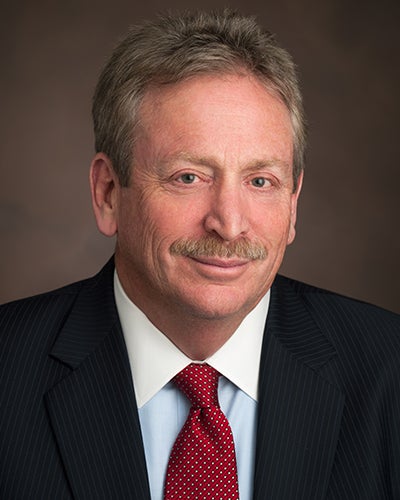
Rebates & Programs
Members qualify for exclusive rebates and programs. Enroll in a program or apply for rebates on energy efficient electric equipment and appliances.

Members qualify for exclusive rebates and programs. Enroll in a program or apply for rebates on energy efficient electric equipment and appliances.

United Power has a wildfire mitigation plan to protect its members and communities. The plan is continuously evaluated and updated to reduce risk.

Operation Round Up is a voluntary way United Power members can give to their communities by having their monthly billing statements rounded up.
The electric industry is progressing rapidly. Our Cooperative Roadmap highlights the co-op's objectives for success now and in the future.
Last month, United Power announced a rate increase taking effect Jan. 1, 2024, and while it is never easy to hear about prices going up, electricity remains one of the best values in most households. Today’s modern household is powering more appliances with electricity. It provides warmth, safety, sanitation, and entertainment. Consider what was in your home just ten or twenty years ago. How many televisions do you have today, compared with how many were in your home growing up? How many connected devices like laptops, tablets, or phones are charging in your home every day? Even something like air conditioning, which was not a standard feature in Colorado homes twenty years ago, is making the modern household more comfortable.
When people talk about the rising cost of electricity, they often fail to notice how much more they are using. Rates at United Power have not changed since Jan. 1, 2020. During the pandemic and through the many months while inflation was running rampant in everything our members need to live — from groceries to gas — United Power rates did not change. Advanced planning was one of the key reasons we were able to hold rates steady during that period — from existing orders of heavy equipment and vehicles to belt-tightening in every function at the cooperative. United Power was able to provide stable rates while our members navigated rising prices on everything they need for their households.
The Colorado Sun recently reported on the cost of the five most common grocery items Colorado households purchase — milk, one pound of hamburger, a loaf of bread, a dozen eggs, and a pound of coffee. They reported that over the last five years the cost of these items has risen 35%. The price of many goods has been impacted by increases in transportation costs, labor, and raw ingredients. Any homeowner who was lucky enough to lock in a low interest home loan is still seeing their monthly payment rise due to increases in property taxes and homeowners’ insurance. All of those factors also impact your utility.
Keeping the system operating efficiently and making sure we can replace and upgrade equipment where necessary are adding to our operational costs. Consider when we need to purchase land for a substation to serve a new neighborhood; United Power is paying higher and higher prices to acquire land for this development, and all those costs are paid through the rates members pay for electricity.
One of the most powerful things about being served by a cooperative is that United Power is a not-for-profit entity. The cooperative does not work for shareholders who want to see profits. Anything collected above what we need to operate is considered patronage capital — and is eventually returned to members as capital credits. United Power serves its members with the goal of providing reliable electricity without an eye on profits.
 Transitions in life, both personal and professional, always have interesting twists.
Transitions in life, both personal and professional, always have interesting twists.
I lived the switch from conventional “hot type” typesetting to “cold type” primitive computers in my first career out of college as a newspaper reporter. The old way of making newspapers required placing individual letters — that were made of lead — into large, heavy frames in a reverse mirror image. The frames were then bolted onto giant printing machines where rolls of paper became the newspapers we read every day. The thunderous, dangerous, and noisy pressrooms gave way to an era of photo sensitive paper, waxed into big sheets, copied onto plastic and attached to the same giant printing machines. It was just the beginning of the change that would make everyone into a journalist — good and bad — with the ability to wirelessly send their stories anywhere in the world with the touch of a button. Unfortunately, it has sadly meant the demise of many printed newspapers.
The twists and turns and unintended consequences did not happen overnight. In fact, in the world of publishing, the death of local newspapers has been gradual over the decades, not a sudden crash and burn. This change has been a bit painful for those of us who still cherish the smell and feel of a Sunday morning newspaper. I have never been able to get used to the feeling of reading on an iPad; it does not give me the same warm memories as a paper rolling off the presses, making my fingers slightly dirty.
The energy transition has may parallels with newspapers that are rolling out over a quickening pace. The traditional “hot type” world of large power plants and massive transmission projects is giving way to smaller scale generation, power at the distribution system level, and thousands of households adding local resources.
United Power is working through the ins and outs of our transition to new power suppliers and a new way of operating. We are moving from a single large supplier to more than a dozen — managing our risk through system diversity. We are looking at new ways of operating our system and trying to keep as much hyper-localized and home grown resources as possible. The hyper-localized model, including significant amounts of energy storage, is going to be required as the time to build new transmission is coupled with the closure of major coal plants. This is not a political question but the reality of the marketplace matched with the changing face of regulatory environments.
Hyper-localized generation has significant benefits for our communities as it keeps tax dollars in our region, brings a higher level of reliability and control, and reduces the stress on the transmission grid at a time when more and more electrification is occurring. Our new fuel mix will dramatically reduce carbon intensity rates as we blend natural gas, renewables, and storage while also making the best use of the Board of Directors’ investments in the distribution system over the decades.
For United Power, the transition will occur in phases. Knowing our low tolerance for risk, we have constructed a portfolio that in the short-term mirrors much of what we have with our current supplier in terms of capacity — albeit slightly lower in cost than what we expect it to be in the next 24 months — with a significant change in the mix of energy. As capacity becomes less expensive and markets develop in the short time beyond that window (2026-2027), we will become experts in managing and operating our system with the new tools in place.
As one of my business school professors always mused, “The future is already here, it is just not widely distributed yet.” At United Power we are committed to this transition for the benefit of our members.
As always, please feel free to reach out to me with any questions.
United Power Offices Closed for Thanksgiving
United Power Supports Local Students